Stuttgart: Benztown a sleek machine cruising with class
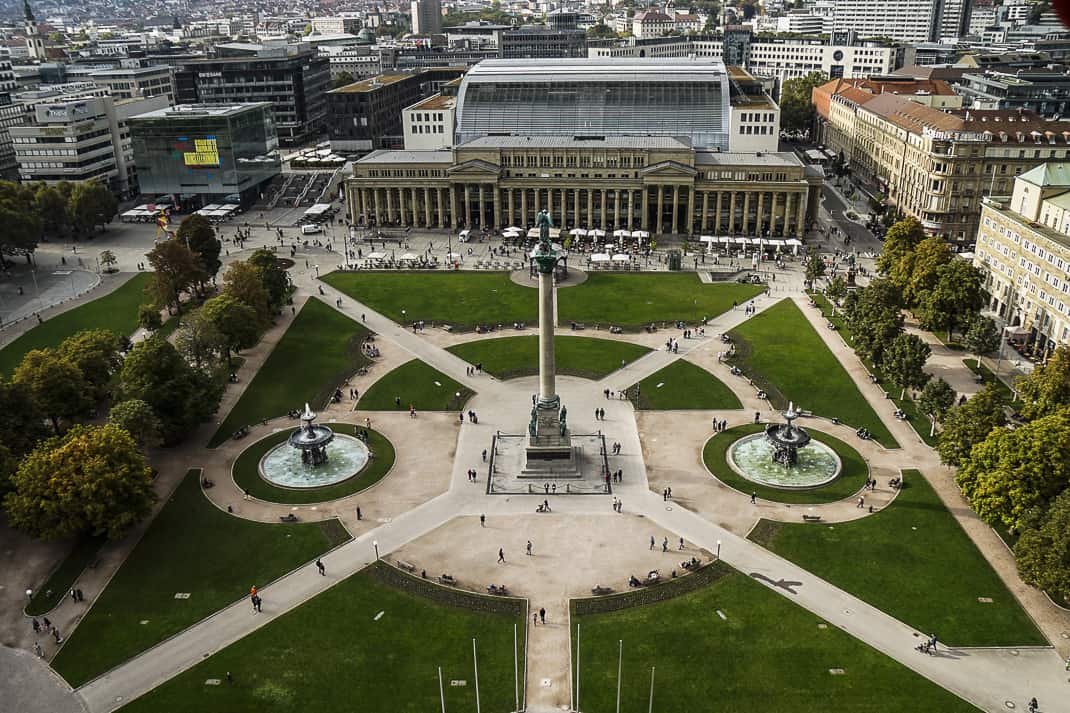
STUTTGART, Germany — I have never been into cars. They’re just a pile of steel and glass. They’re expensive. They’re boring. They’re a hassle. I don’t own one in Rome and hopefully never will. It would add 20 percent to my budget and take five years off my life — and that’s just from finding a parking space.
But I know what cars represent. While people don’t impress me with what they drive, Stuttgart does. Stuttgart is to the automobile what Antwerp is to diamonds. Mercedes Benz and Porsche were invented in Stuttgart and you don’t have to pass the companies’ two modern, gargantuan, glassy museums to know it.
Walk the streets. About every third car seems to be a Mercedes or Porsche. I saw all models. Mercedes’ sporty A-Class and CLA Coupe Mercedes and the Porsch 718 Cayman. I even saw some convertible Mercedes, despite temperatures in the 50s. Behind the wheel aren’t always well-coiffed middle-aged men in 500-euro suits. There are housewives, women in their 20s, guys in T-shirts.
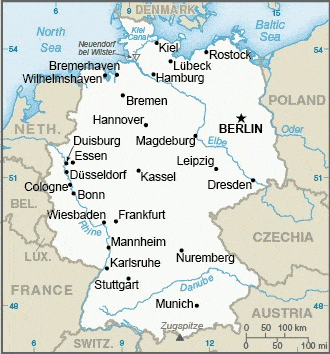
Welcome to Benztown. The Mercedes for the common German. Who knew?
For Stuttgart, this figures. Marina and I spent a day here on our way to the Black Forest this month and the city seems richer than the Vatican Bank.
It’s the second-richest city in a rich country. According to MoneyInc.com, Stuttgart (pop. 633,000) has a gross domestic product per capita (economic output per person) of 90,518 euros (about $105,00).
Only Frankfurt, Germany’s financial capital boasting more billionaires than any other German city, is richer at 94,190 euros ($110,000).
Yet Germans, unlike many Americans, are modest about their wealth. Germany and Germans are not ostentatious. In Stuttgart houses are attractive but not huge. The McMansion does not exist.
In fact, talk to Germans around the country and they’ll say these Swabians, from the southwest German region of Swabia with an odd accent, have a reputation for having deep pockets and short arms.
The city, however, is not cheap. They spend millions on city maintenance. We could eat sauerkraut off the flawless roads. Its city center sports a huge swath of green gardens and parks where you can while away long days, belying the German M.O. of all work and no play.
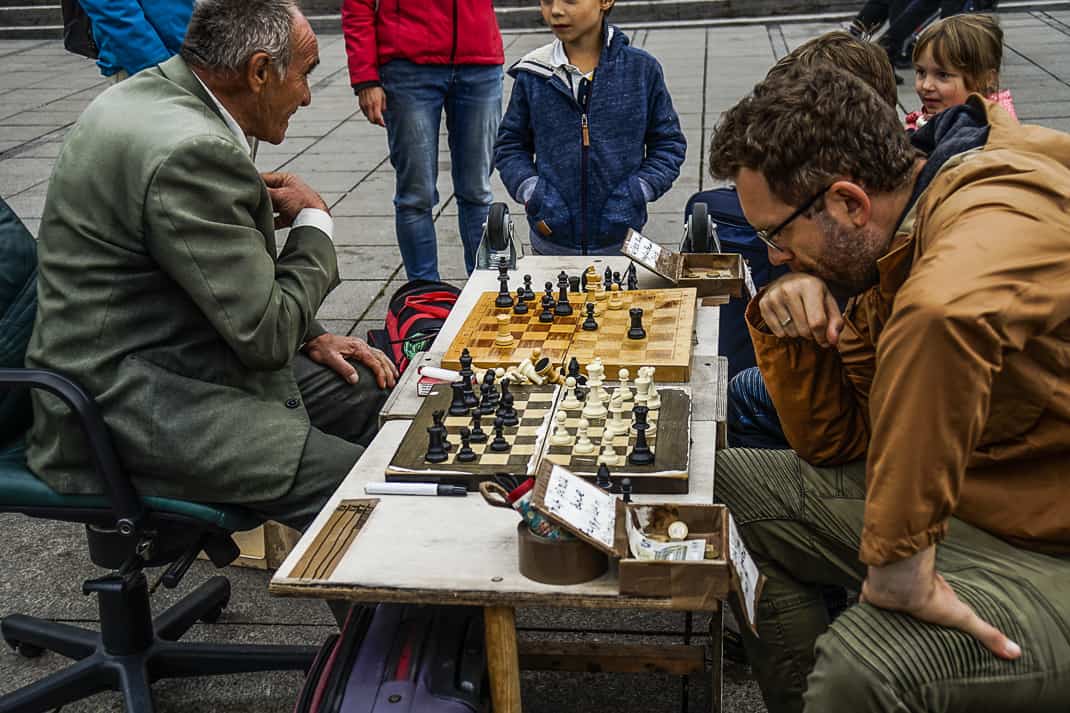
Everything in Stuttgart functions. Businesses answer phones. Things get fixed. Things get done.
We had come from Rome, the filthiest capital in Europe and where it took me six weeks to get my Internet transferred to a new apartment one mile away. Going from Rome to Stuttgart is like going from … well, a Fiat to a Mercedes.

The arrival
We had flown in late at night, just a 1-hour, 45-minute flight from Rome. Marina was totally underwhelmed by my hotel of choice when the cab dropped us off shortly before midnight. The three-star Hotel Astoria has a drab, gray facade I often see in third world countries.
“Brutto (Ugly),” Marina muttered as we checked in.
Inside was simple, business like and functional, much like Germany itself. However, the room was big; the breakfast buffet was plentiful. The Astoria’s plus, however, is its location.

Around the corner was a host of rollicking bars, another major contrast from teetotaling Rome. We checked in our room and immediately bolted to satisfy our vacation ritual of drinking a local beer of the country we’re visiting.
We turned the corner and entered Mos Eisley, a gastro pub with the dark red lighting and general vibe of a grunge club. Marina and I shared a big glass of a Stuttgart-brewed craft beer called Dinkelacker,
Say, “I drink a Dinkelacker in Stuttgart,” and you’ll almost sound German.
The Astoria is also a pleasant 15-minute walk to Stuttgart’s lovely, underrated city center. We walked past boutique gift shops, chic cafes and an odd area with steel weight training equipment attached to the street.
And yes, passing youths were actually testing their bench-pressing skills.
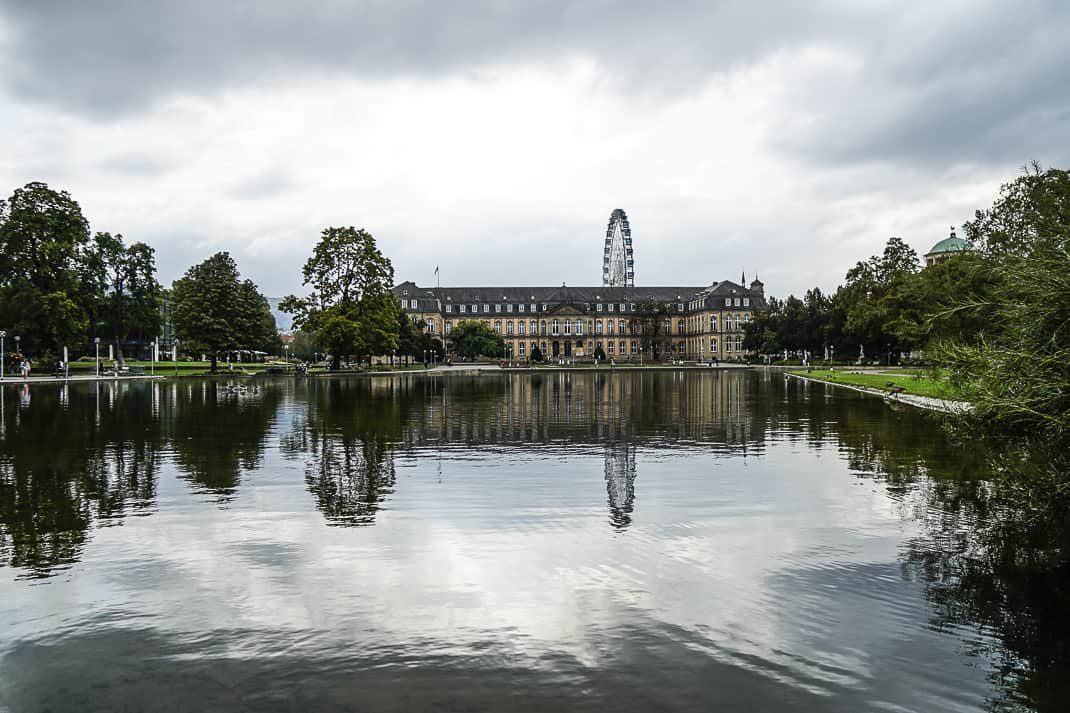
We turned down Konigstrasse, the longest pedestrian street in Germany. It stretches 1,200 meters to Schlossgarten, a beautiful 90-acre park with a beer garden smack dab in the middle of it. Before noon, people were already sitting down with big mugs of cold German beer, the cool temperatures be damned.
With only one day to explore, we shelved our independent nature and did one of Europe’s common Hop On, Hop Off bus tours. We found the double decker bus outside the tourist office at the end of Konigstrasse and it wasn’t like we joined the crowd.
Like the rest of Europe, Stuttgart’s tourism isn’t back to pre-Covid normal yet. Only eight other people, all Germans, were on the bus.
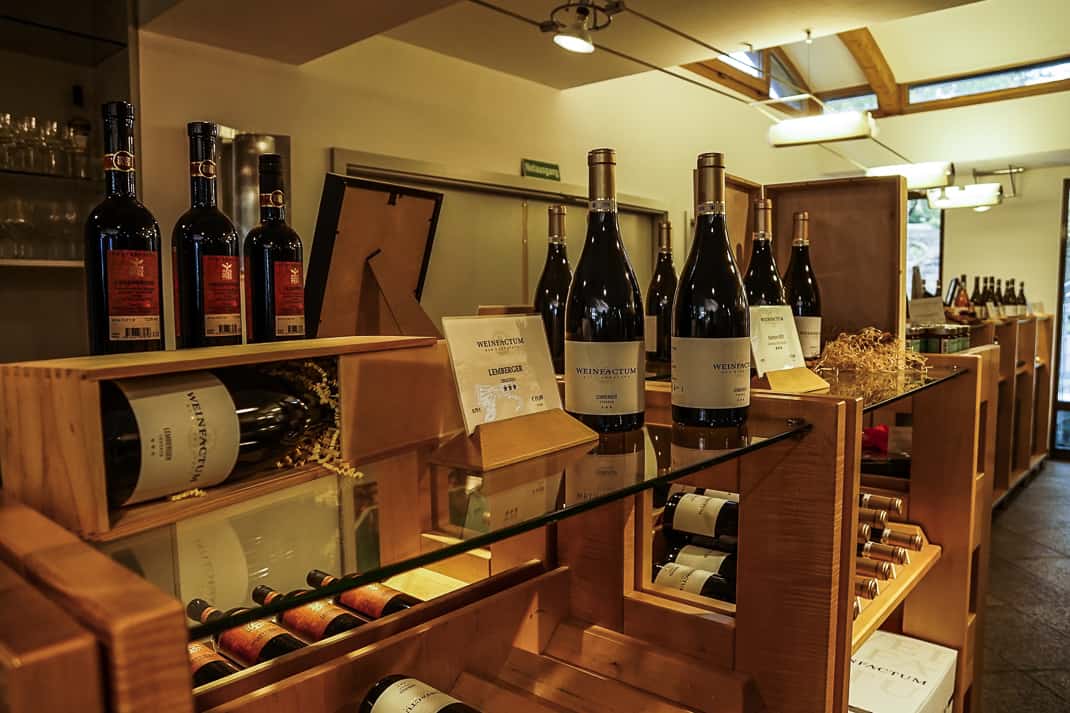
The tour
We donned the multilingual headphones and headed away from Schlossgarten and immediately to Stuttgart’s “fascist quarter.’ We passed a big black, artsy cube, symbolizing the victims of fascism during World War II. It’s a stone’s throw from the Hotel Silber Museum commemorating its days in 1933 when the Gestapo used it to detain and torture political dissidents. Not far away, the Archive Street courtyard was the Nazis’ Southwest Germany central location for executions.
Stuttgart’s relatively modern beauty is a result of World War II. In 1934, the Gestapo sent every male Jew in Stuttgart to concentration camps and made it one of the most heavily fortified cities in the country. However, heavy Allied bombings turned the city center into rubble by 1944. On Sept. 12 of that year, the Royal Air Force dropped 184,000 bombs (Yes, 184 thousand), killing 957 and starting a major fire.
In all, 53 bombing raids destroyed 57 percent of Stuttgart’s buildings, killed 4,477 and injured 8,900. Speaking of Nazis …
… Stuttgart is very proud of its Pig Museum, the first stop on the tour. Called the Schweinemuseum, the museum is built in a 100-year-old slaughterhouse and features every kind of pig souvenir you can imagine, from 50,000 piggy paintings to, yes, piggy banks.
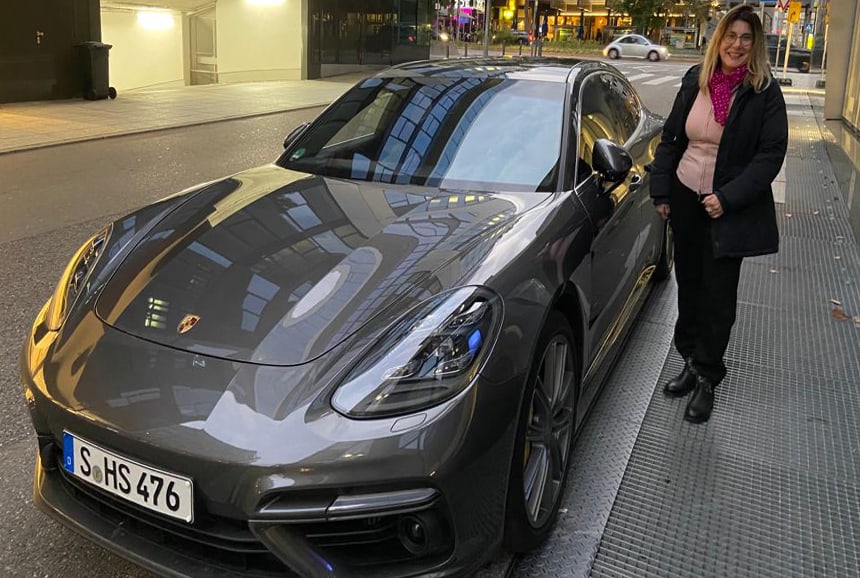
We didn’t care enough to stop, nor did we stop at the Mercedes-Benz Museum despite its swirling glass-and-concrete futuristic architecture. Built in 2009, it covers 178,000 square feet and attracts about 440,000 visitors a year. It features its humble beginnings dating back to 1886 when native son Karl Benz created the first internal combustion engine. The Mercedes-Benz was first marketed in 1901 and named for Benz and Mercedes Jellinek, the daughter of German car entrepreneur Emil Jellinek.
The tour went up one of Stuttgart’s many hills. It’s famous for its 500 staircases all slicing through modern buildings and the few old houses that survived World War II. Cruising through Stuttgart, I noticed the ethnic diversity.
German prime minister Angela Merkel has been roasted by Germany’s growing conservation population for her liberal immigration laws but it hasn’t hurt Stuttgart. According to The New York Times, 40 percent of the population is foreign born, including 64 percent of those age 5 and under. They’re mostly Turks, Greeks and Italians but the city is doing fine, thank you. Stuttgart’s unemployment rate is only 4 percent.
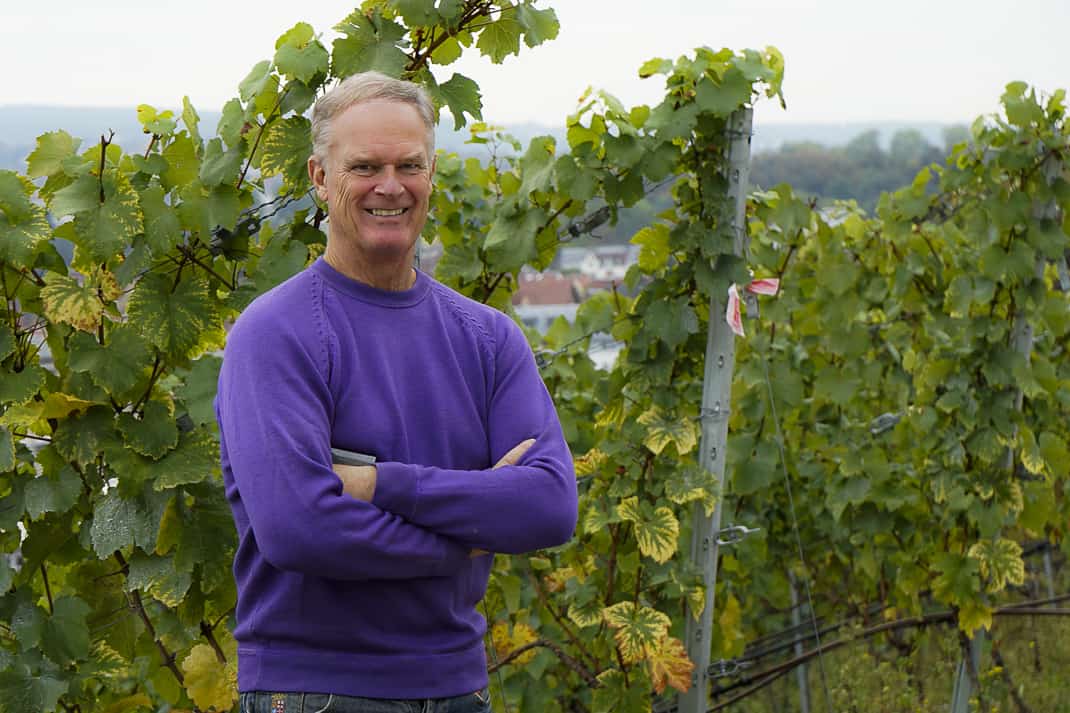
We finally hopped off at Weingenuss (Wine Experience) where 110 acres of vineyards were once tended by the Ancient Romans when this area was occupied by the Roman Empire. It still grows grapes. We stepped in the modern tasting room in the middle-class neighborhood and had a wonderful Riesling, my favorite German wine. Riesling goes with every meat dish, every type of fish or nothing at all, even on a cool fall day in Germany.
As we waited for the bus outside, a man in scruffy clothes drove an old tractor carrying empty grape crates down the street as another Mercedes drove by. It struck me as Stuttgart in a postcard: wealth and leisure.
We later passed former German army barracks that were later taken over by the U.S. military, which still has 40,000 military personnel in the country. We passed the 1956 TV tower which was the first in the world using reinforced concrete. We wound our way past the rich neighborhood with modest houses but million-dollar views.
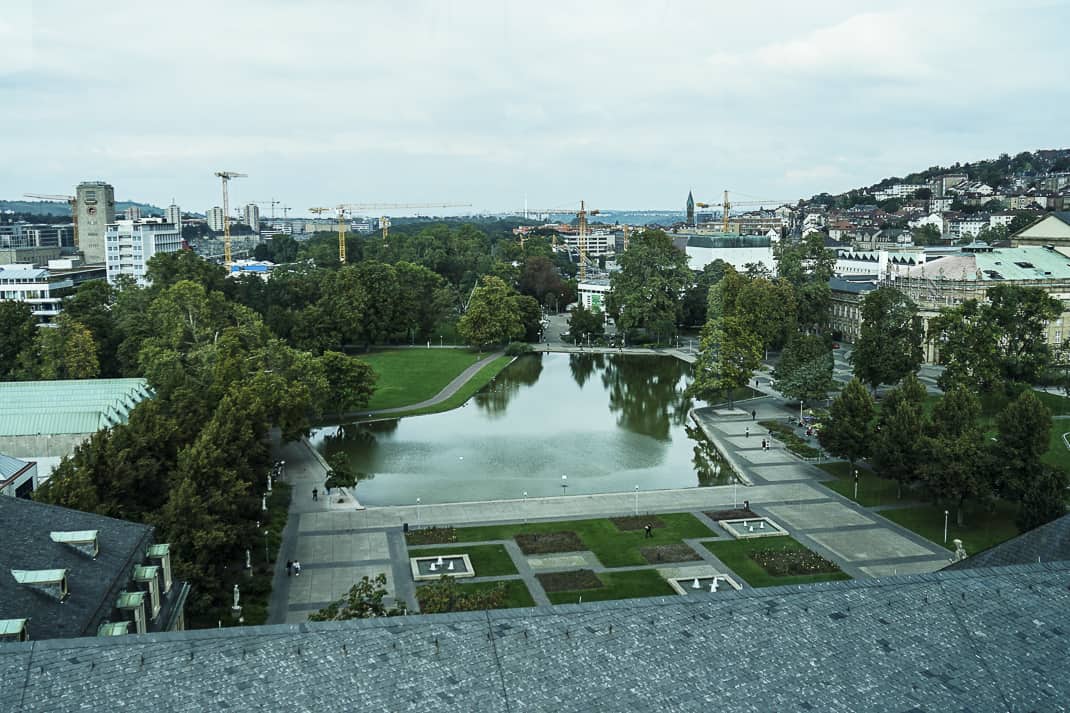
Afterward, we strolled through Schlossgarten where youths gathered on the ground listening to music. Lovers held hands as they walked by the manmade lake lined with chestnut trees and statues and flanked by the glass-covered state parliament building.
Hilly Stuttgart has numerous tall vantage points for city views. We stepped back to our childhood and took the Riesenrad, the Ferris wheel that cranked us up 200 feet for beautiful views of the grassy city center and modern businesses beyond. Statues of sword-wielding women line the roof of the 18th century Baroque Neuss Schloss (New Palace) not far away.
Sitting on our butts nearly all day, we somehow had an appetite. We went to one of Stuttgart’s top spots for local cuisine. Ochs‘n Willi is a big restaurant with several rooms of dark wood paneling and vines hanging from the ceiling beams. A flower adorns every table.

Don’t travel to Germany on a diet. It’ll be ruined in 24 hours. I ordered Bayrische Haxen Pfander mit Pfifferlingen, lean porn leg pieces breaded in a herb mustard seasoning mixture with roasted onions, roasted potatoes and chanterelle mushrooms in an herby cream sauce.
The plate was the size of a small symbol. They served me a glass of local Lemberger red wine in what looked like a syrup pitcher. The dish was rich, lean and exploded with flavor. I also had no need for breakfast the next day.
We sat next to two local women and three rowdy local men, obviously interested in the women.
“We’re the rednecks of Germany,” one of the men said with a laugh. It’s not true. Rednecks don’t build multi-billion-dollar economies but as one Berliner living here told me, “You can’t understand a word these people are saying.”
I asked the men at the table what is Stuttgart’s biggest problem? Immigration? Covid? Unemployment? Nope.
“Traffic,” one said, seriously. “You laugh but it’s true.”
A city with an average GDP of 90,000 euros and the biggest problem is traffic? OK, Stuttgart. You win.
If you want to go …
How to get there: Stuttgart is the major hub of German airline Eurowings. We paid 320 euros for two round-trip tickets from Rome.
Where to stay: Hotel Astoria, Hospitalstrasse 29, www.stadhotels-erkart.de/en/home-2, 49-711-440-8000. Modest three-star hotel a 15-minute walk from the city center. We paid 169.60 euros for two nights.
Where to eat: Ochs’n Willi, Kleiner Schlossplatz 4, 49-711-226-5191, www.ochsn-willi.de, info@ochsn-willi.de, 11:30 a.m.-9 p.m. Spacious, warmly decorated restaurant featuring traditional Swabian cuisine with mains ranging from 19-30 euros.
When to go: July is warmest but most crowded. Average low 60, high 76. It’s also the rainiest with 10 days of rain. January is 33-41 degrees. October is 46-58.
For more information: Stuttgart Tourist office, Königstraße 1a, 49-0711-222-80, www.stuttgart-tourist.de, 9 a.m.-8 p.m. Monday-Friday, 9 a.m.-6 p.m. Saturday, 10 a.m.-5 p.m. Sunday.


October 29, 2021 @ 6:21 pm
“lean porn legs” ??